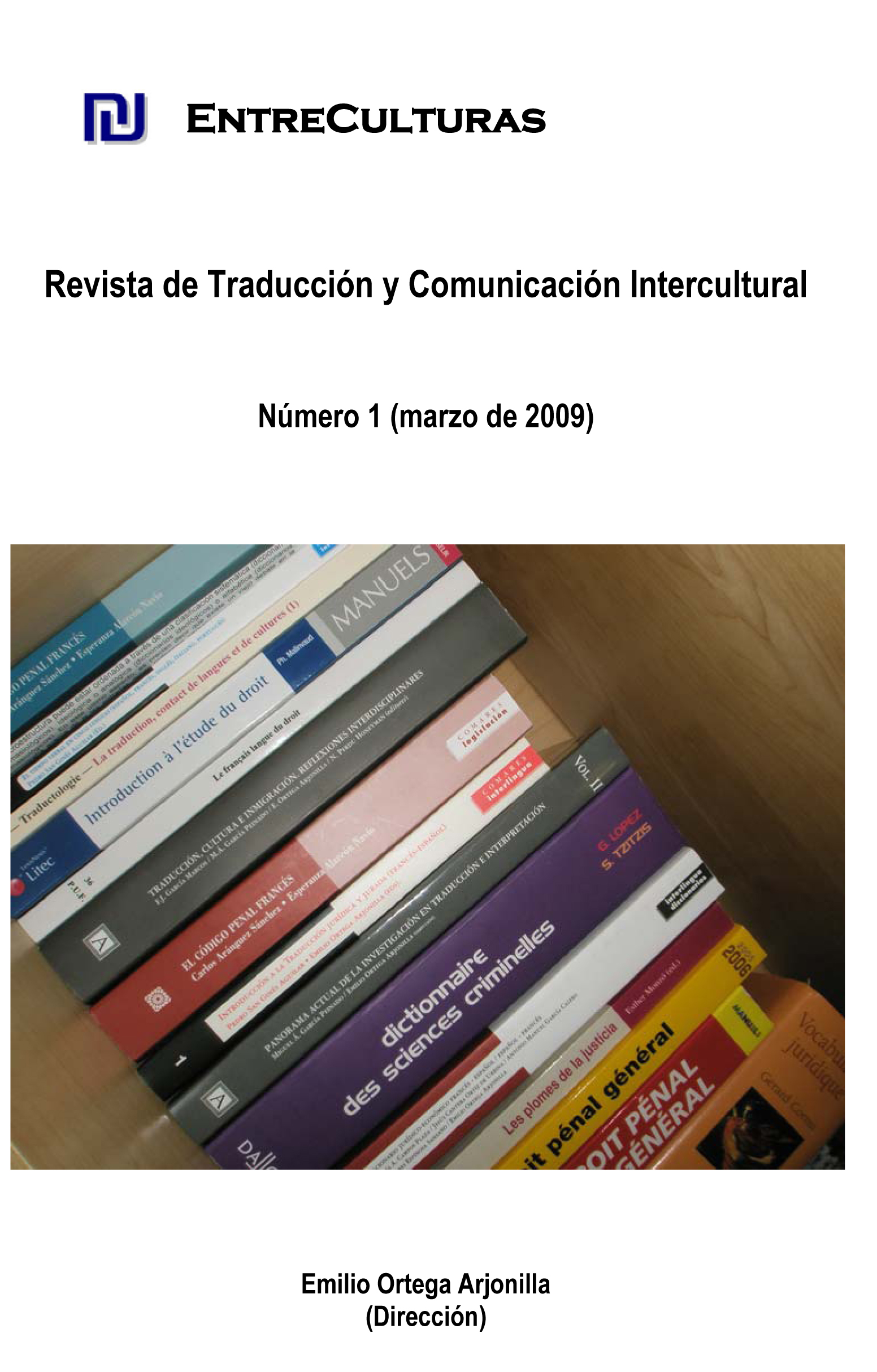TRADUCCIÓN DE LOS REFERENTES CULTURALES EN EL DOBLAJE DE LA SERIE “ÉRASE UNA VEZ... EL HOMBRE” AL ESPAÑOL
DOI:
https://doi.org/10.24310/Entreculturasertci.vi1.11870Keywords:
AVT, French- Spanish dubbing, TV series, cultural referencesAbstract
In the present article, we will analyse the challenges presented by audio visual translation in historical and popular programmes aimed at younger age audiences. This study focuses on two representative elements from the episode of The French Revolution in Castilian Spanish and in Latin American Spanish dubbed version of the French series ‘Was upon a time... Man’. Thus, the objective will be to observe the translation difficulties and its solutions in both the cultures and target languages.
Downloads
Metrics
References
AGOST CANÓN, ROSA (1999): Traducción y doblaje: palabras, voces e imágenes. Barcelona, Ed. Ariel Practicum.
BALLESTER CASADO, ANA ROSA: (2001): Traducción y nacionalismo. La recepción del cine americano en España a través del doblaje (1928-1948). Granada, Ed. Comares.
CANTERA ORTIZ DE URBINA J., ORTEGA ARJONILLA E. Y CAMPOS PLAZA N. A. (2007): La Revolución francesa en clave lingu?ística y textual: Diccionario de términos y expresiones revolucionarios (francés-español), Granada, Método Ediciones.
CHAUME VARELA, FREDERIC (2004): Cine y traducción. Madrid, Ed. Cátedra.
HURTADO ALBIR, AMPARO (2007): Traducción y Traductología. Introducción a la Traductología. 3º ed., Madrid, Ed. Cátedra.
MARCELO WIRNITZER, GISELA (2007): Traducción de las referencias culturales en la literatura infantil y juvenil. Frankfurt, Peter Lang.
MOYA, VIRGILIO (2000) La traducción de los nombres propios. Madrid, Ed. Cátedra.
Downloads
Published
How to Cite
Issue
Section
License
All contents published in Entre culturas. Revista de traducción y comunicación intercultural are protected under the Creative Commons Attribution-NonCommercial-ShareAlike 4.0 International (CC BY-NC-SA 4.0) license. All about this license is available in the following link: <http://creativecommons.org/licenses/by-nc-sa/4.0>
Users can copy, use, redistribute, share and exhibit publicly as long as:
- The original source and authorship of the material are cited (Journal, Publisher and URL of the work).
- It is not used for comercial purposes.
- The existence of the license and its especifications are mentioned.
There are two sets of authors’ rights: moral and property rights. Moral rights are perpetual prerogatives, unrenounceable, not-transferable, unalienable, imprescriptible and inembargable. According to authors’ rights legislation, Entreculturas. Revista de traducción y comunicación intercultural recognizes and respects authors moral rights, as well as the ownership of property rights, which will be transferred to University of Malaga in open access. The property rights are referred to the benefits that are gained by the use or the dissemination of works. Entreculturas. Revista de traducción y comunicación intercultural is published in an open access form and it is exclusively licenced by any means for doing or authorising distribution, dissemination, reproduction, , adaptation, translation or arrangement of works.
Authors are responsable for obtaining the necessary permission to use copyrighted images.





7.png)
